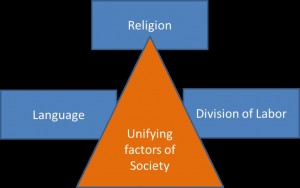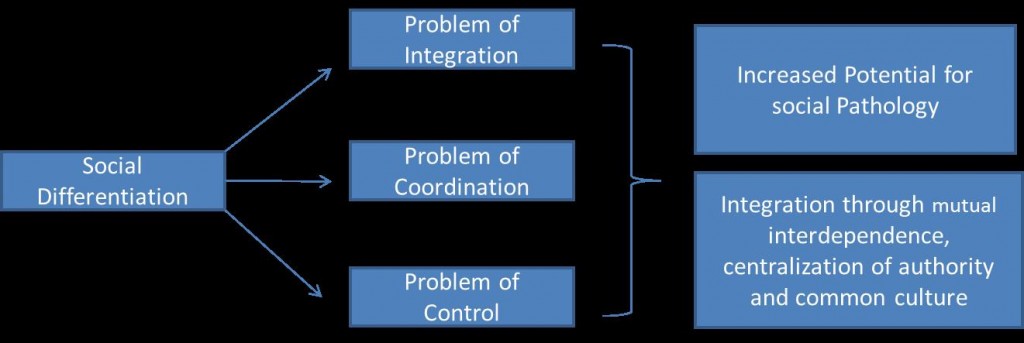Dr. V.K.Maheshwari, M.A(Socio, Phil) B.Se. M. Ed, Ph.D
Former Principal, K.L.D.A.V.(P.G) College, Roorkee, India
The study of social statics and dynamics are the two fundamentals of Comte’s study of the organic phase or social stability . The study of social statics and dynamics are not two distinct classes of facts but are two components of a theory. These studies are not separate but are complementary to each other as static is the study when society is in equilibrium and dynamics is the study of evolution which is a slow and steady process. This slow and steady process can only occur during the phase in which the society is in equilibrium and not disequilibrium or critical phase. Despite the fact that it seemed desirable for methodological and heuristic purposes to separate the study of statics and dynamics, in empirical reality they were correlative. Comte believed that social structures could not be reduced to the properties of individuals. Rather, social structures are composed of other structures and can be understood only as the properties of, and relations among, these other structures
Social Statics and Social Dynamics
Comte considers Sociology into two Theoretical Aspects;
Social Statics and Social Dynamics
Social static focuses on how order is maintained in the society and social dynamic focuses on how society changes over time.
Comte separated social statics from social dynamics. Social statics are concerned with the ways in which the parts of a social system (social structures) interact with one another, as well as the functional relationships between the parts and to the social system as a whole. Comte therefore focused his social statics on the individual, as well as such collective phenomena as the family, religion, language, and the division of labor.
Comte placed greater emphasis on the study of social dynamics, or social change. His theory of social dynamics is founded on the law of the three stages; i.e., the evolution of society is based on the evolution of mind through the theological, metaphysical, and positivist stages. He saw social dynamics as a process of progressive evolution in which people become cumulatively more intelligent and in which altruism eventually triumphs over egoism. This process is one that people can modify or accelerate, but in the end the laws of progressive development dictate the development of society. Comte’s research on social evolution focused on Western Europe, which he viewed as the most highly developed part of the world during his times.
This distinction between social statics and social dynamics is one of his lasting contributions to sociology. His aim was to create a naturalistic science of society, which would explain the past development of mankind and predict its future course.
Social Statics
Comte separated social statics from social dynamics. Social statics are concerned with the ways in which the parts of a social system (social structures) interact with one another, as well as the functional relationships between the parts and to the social system as a whole. Comte therefore focused his social statics on the individual, as well as such collective phenomena as the family, religion, language, and the division of labor.
Social statics is a branch of social physics that deals with the fundamental laws of the social order and the equilibrium of forces in a stable society, It is an approach to sociology focusing on the distinctive nature of human societies and social systems in abstract rather than empirical terms.
It is the study of social systems as they exist at a given time. that examines human societies as they exist in a certain time that is relative to the level of development.
Comte defined social statics as the study of social structure, its elements, and their relations. He first analyzed “individuals” as the Elements of social structure. Generally, he viewed the individual asa series of capacities and needs, some innate and others acquired through participation in society. He did not view the individual as a . “true social unit”; indeed, he relegated the study of the individual to Biology—an unfortunate oversight because it denied the legitimacy of psychology as a distinct social science. The most basic social unit, he argued, is “the family.” It is the most elementary unit, from which all other social units ultimately evolved:
Comte believed that social structures could not be reduced to the properties of individuals. Rather, social structures are composed of other structures and can be understood only as the properties of, and relations among, these other structures. Comte’s analysis of the family then moves to descriptions of its structure—first the sexual division of labor and then the parental relation. The specifics of his analysis are not important because they are flawed and inaccurate.
Main Features of Social Statics
- It is concerned with the present structure of the society. Social Statics refers to the study of the conditions and pre-conditions of social order.
- It studies the issues of social stability and social order.
- It studies the current laws, rules and present conditions of the society. It observes how these laws and rules are affecting the present society.
- It investigates the law of action and reaction of the different parts of the social system.
- It is concerned with the study of major institutions, which preserve the social order. For example, family; it occupies an important position in social structure. It provides the base for the social order and progress of the society.
- Individual, family and social combinations are three levels of society. Family is the smallest and basic unit of sociology.
Factors of Social Statics:
Auguste Comte refuses to place individuals as the base of the society. It is erroneous to derive man’s social tendencies out of his utilitarian considerations as it makes the existence of social state impossible. He places family at the base of society and allows resizing it if necessary to a couple. Family curbs the egoistic nature of a person to make him adaptable to the society this makes it the base of a social feeling causing stability. According to his thought of collective organism he places families at the level of an element, classes and caste of a tissue and cities and towns of an organ. Aware of the limitations of such analogy Comte concluded them by stating language, religion and division of labour as the unifying or binding forces of society.
He finds language, religion and division of labour as the three key factors for the stability of the body social According to Comte, there are three factors of social statics. They are;
- Language;language is the “easiest and common way of communication”, making it an essential tool for binding people closely to each other in a community. Language is a common mode of communication between generations. It helps impart the future generations with the knowledge and skills of the older generation, providing it with a base to progress on. It is the means of storing thoughts and culture for proceeding generations. Without a common language, attaining solidarity and social order is not possible.
- Religion;religion compensates the weaknesses of language by binding the society on the basis of a few common beliefs, acting as a “positive guide”. It ties the society by morality not letting it fall apart because of the disparities among peopleIt provides the guidance for behaviour and it is the root of social order.
- Division of Labor; labor binds the society together on basis of “similarity of classes” but is feared of distancing men from a larger mass as they are more driven towards their personal interests over the societies. Men in this stage become more conscious of their personal needs and feebly relate them to the needs of society It is essential for the success of the state cooperation as it creates interdependence among the people in the society.
 In presenting this analysis, Comte felt that he had uncovered several laws of social statics because he believed that differentiation, centralization of power, and development of a common morality were fundamentally related to the maintenance of the social order.
In presenting this analysis, Comte felt that he had uncovered several laws of social statics because he believed that differentiation, centralization of power, and development of a common morality were fundamentally related to the maintenance of the social order.
Far more important is the view of structure that he implied: social structures are composed of substructures and develop from the elaboration of simpler structures.
Social dynamics is a branch of social physics that deals with the laws, forces, and phenomena of change in society ,it is an approach to sociology focusing on the empirical studies of societies and social systems in the processes of change in years gone by. The processes and forces of change at work in any social group.. Social dynamics is a mathematically inspired approach to analyses societies, building upon systems theory and sociology.
Social dynamics looks at all of the things that can change a social group. It is the study of the ability of a society to react to inner and outer changes and deal with its regulation mechanisms. It deals with the forces in society that provide for change and or conflict., and with those aspects of social life that pattern institutional development and have to do with social change
Comte placed greater emphasis on the study of social dynamics, or social change. For the dynamical view is not only the more interesting . . . , but the more marked in its philosophical character, from its being more distinguished from biology by the master-thought of continuous progress, or rather of the gradual development of humanity.
Social dynamics studies the “laws of succession,” or the patterns of change in social systems over time..
His theory of social dynamics is founded on the law of the three stages;
the evolution of society is based on the evolution of mind through the theological, metaphysical, and positivist stages.
He saw social dynamics as a process of progressive evolution in which people become cumulatively more intelligent and in which altruism eventually triumphs over egoism. This process is one that people can modify or accelerate, but in the end the laws of progressive development dictate the development of society.
Main Features of Social Dynamics
- Ø Dynamics begin when the functions of the social institutions are altered or changed. It begins with the study of the process of social changes. Therefore, it is concerned with the matter of social progress.
- Ø Social dynamics refers to the pattern of the revolutionary progress in which the sequence of the development is necessary and inevitable. The term ‘Progress’ refers to the orderly development of the society, which are according to the natural law. Hence, the order and progress or statics and dynamics are co-related to each other.
- Ø According to Comte, social dynamics describe the successive and necessary stages in the development in the human mind and the society. Moreover, it is natural that the social systems, such as institutions are interrelated and interdependent, so they can make a harmonious whole
- Ø Further, he opined that the social dynamics should depend on the historical perspectives in order to study the process of social change and progress. Thus, the social dynamics are found in all the aspects of the society, such as physical, moral and intellectual. However, the intellectual is the most important.


